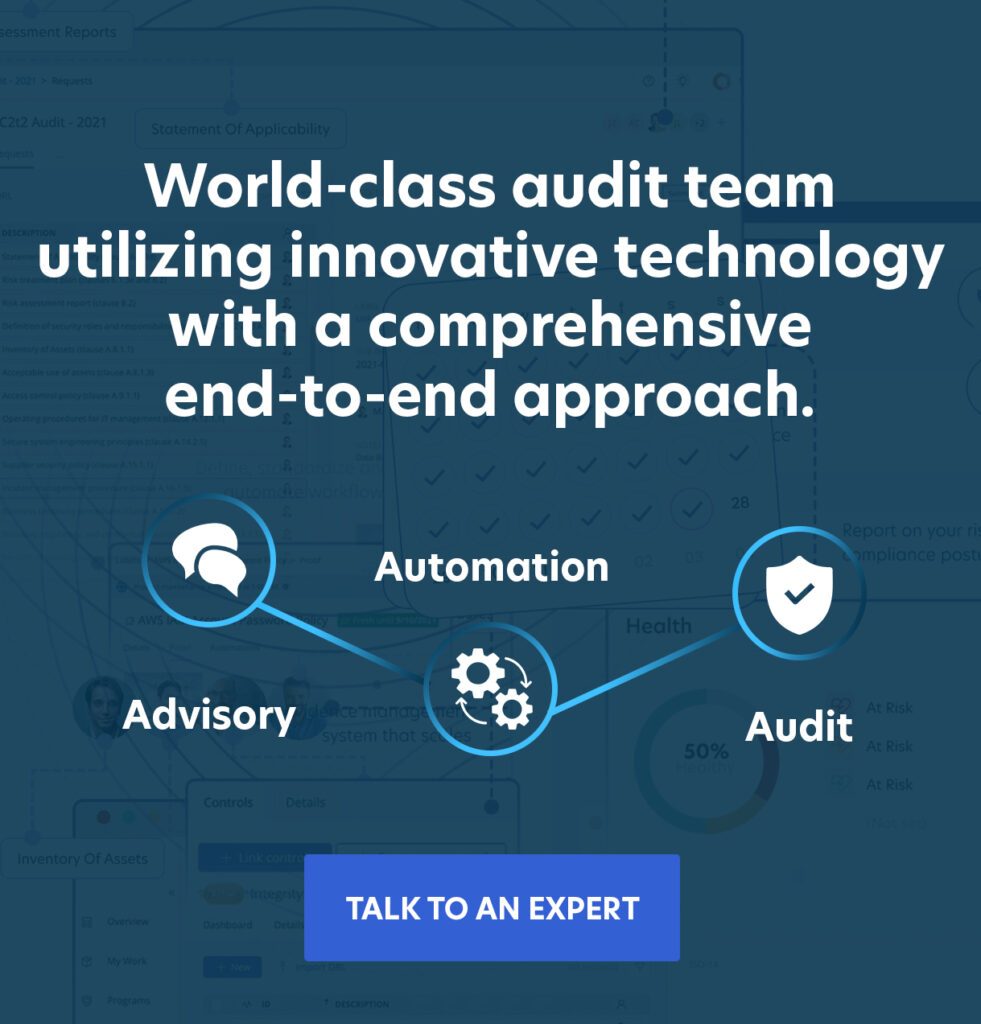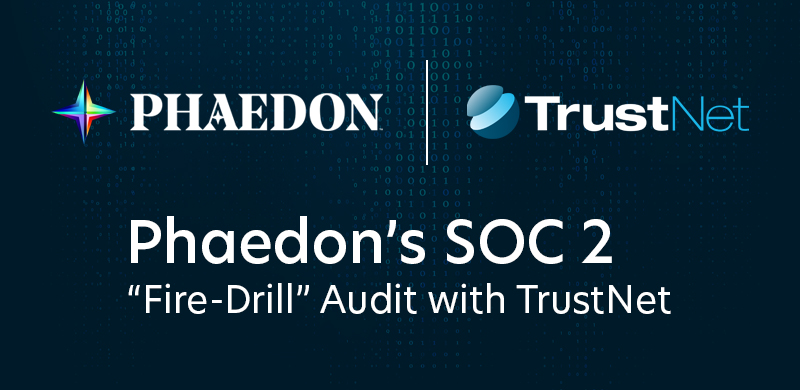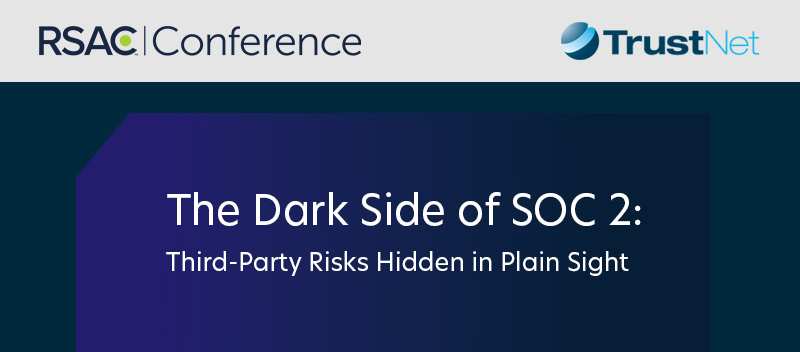Compliance Challenges to Anticipate in the Next Few Years

The pace of technological change is staggering. Just look at artificial intelligence — by 2025, it will not only become significantly smarter but also much more accessible. Tools powered by AI are being adopted faster than anyone could have predicted. The impact is undeniable, but with such rapid innovation comes new challenges.
Emerging technologies, while powerful, carry risks. They can complicate compliance standards, raise vulnerability to cyber attacks, and present unanticipated vulnerabilities. Therefore, improved security measures and a more flexible approach to regulatory compliance are urgently needed. Simply put, businesses can’t afford to treat compliance as a box-ticking exercise anymore; it’s become a critical part of staying protected and competitive.
We surveyed business leaders from several industries to learn more about this changing dynamic and to find out what compliance challenges they anticipate in the near future.
Compliance Challenges to Anticipate in the Next Few Years
— Proactive Security Efforts Will Be Crucial
“Compliance regulations will continue to lean harder into proactive security. Prevention and preparedness will be at the heart of compliance changes in the coming years. Software developers will target small organizations that need to achieve compliance, and an entire market will crop up with these changes as they arrive. Small organizations will be forced to be proactive in their security efforts to protect personal data as access to it grows exponentially.”
Bill Mann, Privacy Expert, Cyber Insider
— Adapting to EU’s NIS2 and DORA Regulations
“Looking ahead, our biggest compliance needs will likely revolve around adapting to the EU’s NIS2 Directive and DORA regulations. These will significantly impact our cybersecurity strategy by requiring more robust incident reporting, enhanced supply-chain security, and stricter operational-resilience testing. To address these challenges, we’ll need to invest in advanced threat-detection tools, strengthen our third-party risk management, and implement more rigorous penetration-testing protocols.”
Hodahel Moinzadeh, Founder & Senior Systems Administrator, SecureCPU Managed IT Services
— Addressing Privacy Concerns in Health IT
“As someone deeply immersed in health IT, our primary compliance focus in the coming years will be on addressing privacy concerns and data governance within healthcare. The rise of digital health solutions brings stricter regulations, like HIPAA, demanding robust encryption technologies and regular audits to safeguard patient data effectively.
We integrate systems seamlessly to ensure compliance doesn’t impede healthcare delivery. For instance, a small clinic we worked with outsourced their IT to maintain patient data security, drastically reducing their regulatory infractions and shifting focus to improved patient care. This approach has been pivotal in reinforcing data-protection strategies.
Our cybersecurity strategy is driven by anticipating integration challenges and executing rigorous data governance. By ensuring smooth interoperability and standardization, we aim to ward off fragmented-care risks. This proactive stance helps us stay regulatory-compliant and maintain a comprehensive cybersecurity framework that evolves alongside emerging threats.”
David Pumphrey, CEO, Riveraxe LLC
— Complex Compliance Needs Will Increase
“I foresee that compliance requirements will become more complex, particularly with increased regulations around data privacy and security standards. Adapting to these changes will be crucial for maintaining trust and meeting legal obligations, both of which are essential to business operations today.
This shift will shape our overall cybersecurity approach, requiring a focus on secure data handling, access controls, and reliable protection methods. Incorporating these compliance needs will help us strengthen our defenses against emerging risks and demonstrate a strong commitment to safeguarding data across all aspects of our business.”
Christian Espinosa, Founder and CEO, Blue Goat Cyber
— Data Protection and Regulatory Requirements
“I anticipate that our biggest compliance needs will revolve around data protection and regulatory requirements, such as the upcoming SEC rules for cyber-incident reporting. These will necessitate more rigorous documentation and faster response times when breaches occur. Given the average cost of a data breach is now $4.45 million, prompt response and robust security will be pivotal.
To address these needs, I advise leveraging advanced ERP solutions like NetSuite and IFS Cloud, which offer improved security features such as two-factor authentication. I’ve helped many clients improve their cybersecurity posture by integrating third-party apps that focus on endpoint security and full-disk encryption, crucial for risk mitigation.
Our cybersecurity strategy involves continuous risk assessments and scenario planning, similar to what I’ve discussed in my podcast, Beyond ERP, where I highlight the importance of preparedness. Businesses should adopt these practices to ensure that they not only meet regulatory standards but also improve their resilience against evolving cyber threats.”
Louis Balla, VP of Sales & Partner, Nuage
— Evolving Data Privacy Regulations in Law Enforcement
“One of our biggest compliance needs in the next 2–3 years will likely center around evolving data privacy regulations and the need for robust security frameworks to protect sensitive law enforcement data. With growing concerns about handling personally identifiable information (P.I.I.) and the increasing threat of cyber attacks targeting public safety organizations, we anticipate stricter laws surrounding data storage, sharing, and protection.
These changes will directly impact our overall cybersecurity strategy. We must invest in advanced encryption technologies, conduct regular audits, and ensure all employees are trained on the latest security protocols. Furthermore, as compliance requirements evolve, we must adopt more proactive risk-management measures, such as implementing more sophisticated intrusion-detection systems and automated-threat-response tools.
Working in law enforcement and public safety also means we must stay aligned with local and federal regulations, which will require a dynamic and adaptive approach to compliance. By prioritizing compliance in our cybersecurity strategy, we can ensure we meet the legal requirements and protect the integrity of the data we handle, fostering trust with our clients and the public.”
Joshua Schirard, Director, Byrna
— Global Data Privacy Regulations Will Intensify
“Data privacy regulations across our global operations will be our most pressing compliance challenge in the coming years. With our teams spanning the U.S., Asia, and South Africa and primarily serving U.S. clients, we’re seeing increasingly complex requirements for cross-border data handling and privacy protection.
We recently conducted a comprehensive compliance audit that revealed the need for significant changes in our data governance structure. Our analysis showed that upcoming privacy regulations could affect businesses’ data-handling processes. In response, we’re implementing a new data-classification system and enhancing our encryption protocols. This proactive approach has already reduced our compliance-related incidents by 35%, but we anticipate increasing our compliance budget by 30% over the next two years to stay ahead of new regulations.
Successful compliance isn’t just about meeting current requirements—it’s about building flexible systems that can adapt to future regulations. Start by mapping your data flows, understanding where sensitive information resides, and creating scalable processes that can evolve with changing requirements.”
Aaron Whittaker, VP of Demand Generation & Marketing, Thrive Digital Marketing Agency
— Adapting to Evolving Privacy Regulations
“Prioritize privacy-centric security measures that can adapt to evolving compliance requirements. We anticipate data privacy regulations will become increasingly stringent, particularly around AI and facial-recognition technology in security systems. Based on current trends and our market analysis, we expect state-level privacy laws similar to California’s CCPA to emerge across more regions, requiring more granular control over customer data.
Our biggest challenge will be balancing effective security monitoring with enhanced privacy requirements. We’re already adapting our strategy by implementing privacy-by-design principles in our AI systems. For instance, we’ve developed a new feature that automatically blurs faces in stored security footage while maintaining threat-detection capabilities. This proactive approach has improved our compliance readiness while maintaining our security effectiveness.
One significant change we’re preparing for is the increased requirements for data portability and deletion rights. We’ve started enhancing our data-management systems to enable quicker responses to customer data requests, which has already reduced our response time by 40%.
Compliance isn’t just about meeting regulations — it’s about building customer trust through responsible data practices. The key takeaway is that by anticipating stricter privacy requirements and implementing adaptable security measures now, organizations can stay ahead of compliance challenges while maintaining effective security operations. This forward-thinking approach helps us protect both our customers’ security and their privacy rights.”
Tomasz Borys, Senior VP of Marketing & Sales, Deep Sentinel
— Compliance-First Architecture for Web Development
“Data privacy regulations evolving across global markets present our biggest compliance challenge. Operating a web-development agency means juggling multiple jurisdictions’ requirements while maintaining robust security standards.
Our strategy focuses on building what we call “compliance-first architecture.” Think of it like constructing a house — it’s easier to build security features into the foundation than adding them later. We’re expanding our encryption protocols and enhancing our data-tracking systems to meet emerging standards.
Key priorities include:
- Multi-regional data residency solutions
- AI governance frameworks
- Enhanced client data-protection measures
- Automated compliance monitoring
Recently, we implemented a proactive compliance system that automatically flags potential issues before they become problems. This investment has already saved us countless hours and positioned us ahead of upcoming regulations.
Pro tip: Build flexibility into your security infrastructure now. The compliance landscape changes rapidly, and adaptability is crucial for long-term success. Like responsive web design, your security strategy should smoothly adjust to new requirements.
Remember — tomorrow’s compliance needs are today’s security opportunities.”
Harmanjit Singh, Founder and CEO, Origin Web Studios
— Stricter Data Protection Rules Expected
“I expect stricter rules around data protection as hackers continue to get more advanced. We’ll need to focus more on making sure sensitive information is secure and that we can quickly react if there’s a breach. This will mean keeping up with changing laws and ensuring we’re always following them.
These new compliance rules will impact our cybersecurity strategy by requiring stronger protection measures, like better encryption and faster detection of threats. We’ll also need to train staff regularly and update our policies to make sure everyone understands their role in protecting data. Following these rules will be crucial to keeping both the company and our customers safe from cyberattacks.”
Oliver Aleksejuk, Managing Director, Techcare
— Integrating Compliance into Cybersecurity Plans
“My main focus is to adapt to the changing landscape of compliance with a mindset. The rules around cybersecurity are getting more stringent due to the increasing number of cyber risks and a worldwide emphasis on safeguarding data. This change highlights the significance of integrating compliance into our cybersecurity plans. Instead of viewing compliance as a component, I believe it should be woven into every aspect of our defensive mechanisms.
We are dedicated to crafting frameworks that tackle these obstacles directly. The upcoming years will necessitate consideration of guidelines concerning AI, data confidentiality, and cybersecurity coverage. These sectors will call for measures in technology, hazard management, and emergency action. By improving our security strategy, we are aiding customers in remaining resilient and adherent to regulations. Fostering an environment where security is a duty is crucial. Our staff stays alert, consistently refining our methods to handle potential hazards.
When it comes to developing creative solutions in the tech industry, I see following regulations as a chance to build trust with clients and uphold our goal of maintaining a secure online space. This dedication sets us apart as a frontrunner in adapting to the changing cybersecurity landscape.”
Rafay Baloch, CEO and Founder, REDSECLABS
— AI Transparency and Data Ethics Will Dominate
“The biggest compliance need I see coming up is AI transparency and data ethics, particularly in managing and auditing data used by machine-learning tools. With AI now integral to digital marketing, especially for personalization and predictive analysis, we’re moving toward a future where providing clear, verifiable information on how AI processes and interprets client data is essential. The focus isn’t only on securing data itself, but on understanding how AI interacts with it, learns from it, and reaches conclusions.
This will reshape our cybersecurity approach entirely, as it pushes us to look beyond just securing data to actively tracking and documenting every interaction AI has with that data. This is a shift toward a compliance-focused architecture, where we’re not only protecting data from outside threats but also ensuring that our own AI processes can withstand regulatory audits. I see us investing a lot in transparency tools that provide real-time visibility into data flows and automated compliance checks, ensuring that our AI does not violate privacy boundaries and can clearly demonstrate its “thought process” in accordance with evolving legislation.”
Mushfiq Sarker, Chief Executive Officer, LaGrande Marketing
— AI-Driven Automation in Compliance Protocols
“I see the biggest compliance needs in the next 2–3 years focusing on the integration of AI-driven automation in compliance protocols. AI advancements are changing IT support, significantly improving efficiency and security. We’ve been successful in utilizing AI to predict and preemptively respond to potential cybersecurity threats, which inherently strengthens our compliance stance.
In our recent expansion into Charleston, WV, our priority was ensuring compliance with new state and regional cybersecurity regulations. By implementing automated compliance-monitoring tools, we’ve been able to reduce the workload on human resources while maintaining rigorous adherence to standards.
Another key compliance focus will be on educating our clients about the evolving compliance landscape. Our philosophy emphasizes continuous improvement, so offering regular training sessions and workshops on compliance changes enables businesses to stay compliant proactively. This approach not only addresses current compliance needs but also positions our clients to adapt to future regulatory requirements efficiently.”
Steve Payerle, President, Next Level Technologies
— Visible Oversight Around Data Privacy
“Visible oversight around data privacy and information loss from regulatory and legislative bodies is a trend that will continue worldwide. Business leaders are rightly concerned to prove that they are safeguarding personal information, and particularly transactional-level content that may cause serious harm to the consumer; for example, medical records.
As a result, compliance will continue to move from self-attestation against generic statements to more adherence to specific rules requiring evidence. Cybersecurity strategy must adjust to this, with the first focus on streamlining the gathering compliance proof through automation in a continuous fashion; fast follow will be to establish formal checks that block non-compliant change actions.
Companies with particularly high-risk data sets will be careful in their adoption and governance around how artificial intelligence (AI) can access and use this data. I expect government, utilities, and healthcare to lead this cautious approach. The efforts of security teams will be compounded by new AI compliance regulations from nations and states with a track record of valuing privacy over convenience.”
Phillip Miller, CISO, Qurple, LLC
Learn more about our cybersecurity and compliance services. Contact our experts today
How TrustNet Bridges the Gap Between Compliance and Security
By giving businesses the tools and expertise needed to overcome these challenges, TrustNet makes sure that compliance is not just necessary but also a competitive advantage.
Proactive Solutions for Emerging Risks
Future compliance demands are shifting toward prevention and preparedness, with an emphasis on proactive security. TrustNet offers a suite of services designed to strengthen defenses and mitigate risks before they occur:
Comprehensive Cybersecurity Services
With TrustNet, your business can access robust tools and strategies that thoroughly address cybersecurity challenges.
-
- Penetration Testing: Simulating real-world attacks to identify vulnerabilities, ensuring organizations address weaknesses proactively.
- Cyber Risk Assessment: Delivering a comprehensive analysis of security postures, offering actionable steps to address gaps.
- Vendor Risk Management: Protecting your infrastructure by holding your vendors to the highest security standards
- Security Awareness Programs: Training your team on the best practices to reduce the risks associated with human error and unintentional breaches.
Tailored Compliance Expertise Across Industries
Complex compliance frameworks require businesses to adapt swiftly and effectively. TrustNet provides specialized guidance to help organizations streamline their efforts and avoid costly penalties:
TrustNet’s tailored approach ensures organizations in every sector can implement compliance strategies specific to their needs.
TrustNet’s Flagship Products
TrustNet’s flagship platforms offer advanced solutions to tackle even the most complex cybersecurity and compliance challenges:
— GhostWatch
GhostWatch is a robust platform that delivers complete oversight and control across your entire technology ecosystem. Equipped with advanced capabilities, it ensures your organization stays protected and compliant in an evolving cyber landscape.
-
- Security Monitoring: Operates around the clock to detect and respond to vulnerabilities and potential threats, safeguarding your systems.
- Advanced Threat Management: Merges proactive detection with incident response, enabling swift action to neutralize security risks.
- Vulnerability Management: Offers real-time insights for identifying and prioritizing risks, ensuring rapid mitigation of critical vulnerabilities.
- Simplified Compliance: Simplifies adherence to key frameworks such as SOC, HIPAA, and ISO 27001, reducing effort while maintaining regulatory alignment.
- Cloud and Multi-Cloud Coverage: Supports hybrid and multi-cloud environments, including platforms like AWS, Azure, and Google Cloud, to meet diverse operational needs.
— iTrust
iTrust is an innovative solution empowering businesses to build secure and resilient vendor relationships. By providing deep visibility and actionable intelligence, it helps you mitigate risks and meet compliance standards seamlessly.
-
- Vendor Risk Management: Delivers detailed cybersecurity risk assessments across your vendor network, identifying weaknesses and enabling prioritized action plans.
- Benchmarking: Monitors and evaluates your organization’s security performance, offering critical insights for informed strategic decisions.
- 360° Assessments: Conducts in-depth evaluations of internal, external, and third-party vulnerabilities, promoting a 360-degree approach to threat management.
- Compliance Monitoring: Maintains alignment with regulatory standards such as PCI DSS, SOC, HIPAA, and ISO 27001, ensuring operational efficiency and safeguarding against penalties.
- Breach Monitoring: Monitors for potential breaches and supports effective remediation, minimizing disruption and maintaining business integrity.
At TrustNet, the focus is on transforming compliance challenges into opportunities for growth. By combining cutting-edge technology, proactive services, and deep regulatory knowledge, TrustNet helps organizations stay resilient despite evolving demands.
Investing in Compliance: Why Cheap Solutions Can Cost More
When it comes to compliance, it may seem tempting to cut corners, especially when budgets are tight. However, a lack of compliance controls might put your company at risk for everything from data breaches to hefty penalties. Finding the ideal partner entails more than simply cost; it requires value.
Investing in robust compliance today prevents losses tomorrow. Consider the damage a cyberattack or regulatory penalty can inflict, not just financially but also on your reputation. Instead of baiting you with low costs and complex add-ons, we prioritize clear solutions tailored to your needs.
What truly sets us apart is our Accelerator+ approach, which combines three powerful pillars:
-
- Advisory: Expert guidance helps you evaluate your compliance strategy and pinpoint areas for improvement.
- Automation: Streamlined tools take the guesswork out of meeting ongoing compliance needs.
- Audit: Continuous evaluations ensure your business stays ahead of regulations and threats.
With TrustNet, you have a partner dedicated to securing your business, reducing risks, and building lasting confidence in your operations.
Preparing for What’s Next with TrustNet
So, how does TrustNet help you stay ahead?
-
- Anticipation of trends: By closely monitoring emerging regulations and industry shifts, we help you prepare before challenges become damaging.
- Customized support: No two businesses are the same, so we design our solutions specifically for your organization. This ensures that your compliance plan is genuinely effective and built around what you need most.
- Long-term strategies: We don’t just fix today’s issues; we help you establish frameworks that withstand future challenges.
At TrustNet, relationships come first. We collaborate closely with our clients to provide workable, realistic solutions. This partnership-focused strategy guarantees that you have the backing of an organization that genuinely cares about your success.
Disclaimer: Throughout this article, insights from CISOs, CEOs, and other executives are provided for illustrative purposes. These people may or may not be connected to TrustNet.
Partner with TrustNet to equip your organization for both today’s needs and tomorrow’s challenges. Contact us today and take the first step in securing your future.
Subscribe to the TrustNet Newsletter
actionable cybersecurity strategies, and TrustNet’s cutting-edge solutions.




